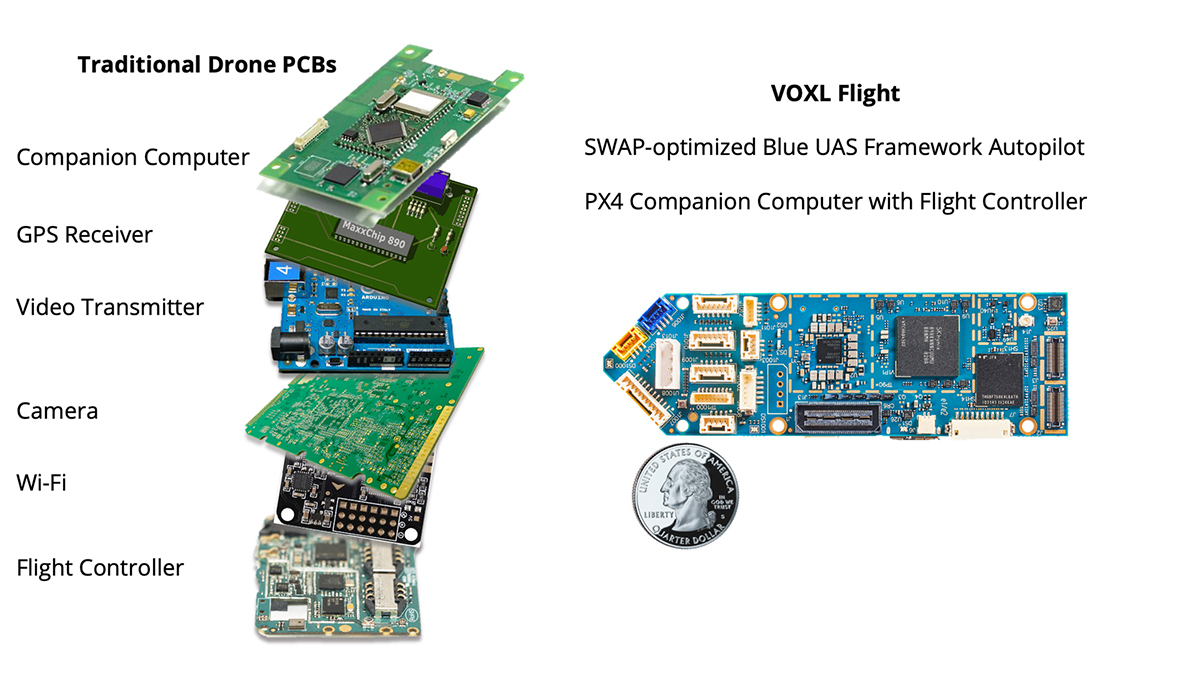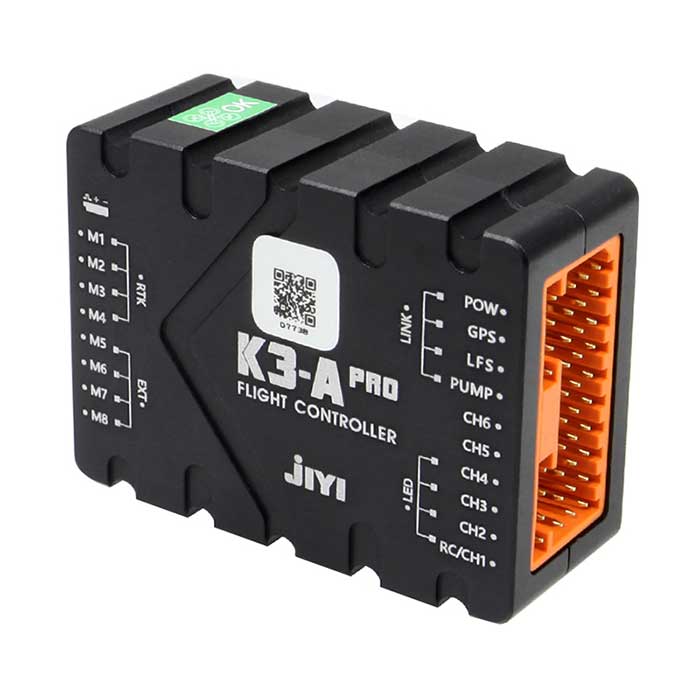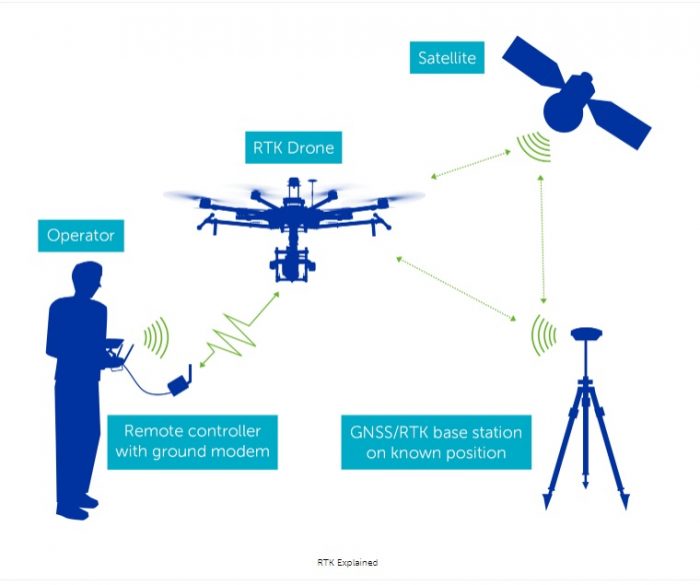The Potential of UAVs: SparkNavi Drone Flight Controller and GNSS/INS Made in Taiwan
The Potential of UAVs: SparkNavi Drone Flight Controller and GNSS/INS Made in Taiwan
Blog Article
Exploring the Duty of Drone Trip Controllers in Enhancing Flight Stability and Navigation Effectiveness
The development of drone modern technology has dramatically increased the value of trip controllers, which serve as the mind of these aerial vehicles. By integrating real-time information from an array of sensors, trip controllers improve trip stability and navigation performance, making sure that drones can operate efficiently even in complex atmospheres.

Understanding Flight Controllers
Flight controllers are integral components in the performance of drones, functioning as the brains that manage and stabilize trip procedures. These advanced gadgets process data from numerous sensing units, including accelerometers, gyroscopes, and GPS, to ensure that the drone maintains its intended flight path. The flight controller translates this data and executes commands based on pre-defined algorithms, enabling the drone to reply to ecological modifications, such as wind or barriers.
The main feature of a flight controller is to maintain security during trip. It accomplishes this by making real-time adjustments to the drone's electric motors and control surface areas, making certain equilibrium and control. Furthermore, modern flight controllers integrate sophisticated features such as waypoint navigating, enabling automated trip paths and boosted functional effectiveness.
Recognizing the design of trip controllers is important for both enthusiasts and specialists. They usually are composed of a microcontroller, firmware, and different user interfaces for sensing unit input and interaction. As modern technology breakthroughs, trip controllers have actually become extra capable and small, incorporating expert system to adjust and improve decision-making processes to intricate flight scenarios. This development symbolizes a crucial growth in the drone industry, paving the method for much more advanced applications and much safer operations.
Secret Components of Trip Security
Achieving optimal trip stability in drones relies upon numerous crucial components that function in show to guarantee regulated and smooth procedures. Central to this security is the trip controller itself, which refines information from various sensors to preserve the wanted flight attitude. This includes accelerometers and gyroscopes that determine activity and positioning, enabling for real-time modifications to the drone's placement.
Another crucial component is the digital speed controllers (ESCs), which manage the power delivered to the electric motors. By carefully adjusting electric motor speeds in response to flight controller commands, ESCs help preserve equilibrium and counteract disruptions triggered by wind or unexpected motions.
In addition, the design of the drone's structure plays an essential duty in trip stability. A well-structured frame decreases resonances and improves the total wind resistant account, adding to smoother trip features. Finally, the assimilation of sophisticated formulas within the trip controller help in predictive adjustments, guaranteeing a receptive and adaptable flight experience.
With each other, these components develop a natural system that improves a drone's stability, allowing for precise handling and boosted efficiency in different trip conditions.
Navigating Effectiveness Techniques
Effectiveness in navigation is necessary for maximizing drone procedures, especially in intricate atmospheres. Reliable navigating techniques boost the capability of drones to go across tough surfaces and avoid challenges, thereby boosting operational effectiveness and security.
One famous method is the application of advanced GPS and inertial dimension units (IMUs) that provide accurate area tracking and orientation information. These modern technologies enable drones to calculate ideal trip paths in real-time, taking into consideration different elements such as wind conditions and potential obstacles.
An additional technique includes making use of formulas for course preparation and optimization. Formulas such as A * and Dijkstra's formula can be released to figure out the most reliable path while decreasing power consumption and flight time. Integrating device understanding versions can allow drones to adaptively discover from their environments, boosting navigating capacities via experience.

Effect on Autonomous Drones
The assimilation of advanced navigating strategies has actually exceptionally transformed the capabilities of autonomous drones, enabling them to run with better autonomy and accuracy. SparkNavi drone flight controller and GNSS/INS made in taiwan. These improvements are mostly connected to innovative trip controllers that utilize real-time data processing and sensing unit fusion, permitting drones to navigate intricate settings effortlessly
The influence on self-governing drones expands beyond mere navigating; it incorporates improved obstacle avoidance, improved security throughout dynamic conditions, and enhanced objective reliability. By leveraging algorithms that incorporate equipment discovering and expert system, drones can adjust to altering scenarios, making notified choices that optimize their flight paths while minimizing dangers.
In addition, the application of robust trip controllers has promoted the implementation of complex tasks, such as airborne evaluations, distribution services, and agricultural tracking, with minimal human intervention. This capability not only improves procedures but also lowers human mistake, thereby enhancing total security.
Because of this, the functional scope of autonomous drones has expanded substantially, making them vital devices in different industries. Their ability to execute successfully in varied situations underscores the essential role that advanced trip controllers play fit the future of unmanned airborne systems.
Future Trends in Trip Control
Frequently, advancements in trip control technology are positioned to redefine the landscape of drone operations in the coming years. Emerging patterns show a significant change in the direction of enhanced expert system (AI) integration, making it possible for trip controllers to refine real-time data a lot more effectively. This advancement straight from the source will assist in enhanced decision-making abilities, permitting drones to adjust to dynamic environmental conditions autonomously.
Moreover, the implementation of artificial intelligence algorithms is expected to boost predictive upkeep, thus reducing downtime and extending the lifecycle of drone elements. This positive method to upkeep will be critical as drone applications expand across various industries, from agriculture to logistics.

.png)
Last but not least, innovations in safe interaction protocols will resolve security and governing issues, ensuring that drones can operate effortlessly in congested airspaces (SparkNavi drone flight controller and GNSS/INS made in taiwan). Collectively, these fads direct towards a future where trip control systems are not just smarter and a lot more likewise qualified yet efficient of running securely in an increasingly incorporated airspace
Final Thought
In verdict, drone trip controllers are integral to boosting flight stability and navigating performance via the sophisticated processing of sensing unit information. By maintaining ideal trip attitudes and employing innovative formulas for course optimization and barrier avoidance, these controllers substantially add to the autonomy and functional safety of drones. As modern technology remains to advance, further improvements in trip control systems are anticipated, guaranteeing better performance and broadened capabilities in the world of unmanned airborne cars.
By incorporating real-time data from an array of sensing units, flight controllers boost trip security and navigation effectiveness, making sure that drones can run smoothly even in complex atmospheres.Flight controllers are essential components in the performance of drones, offering as the minds that support and take care of trip operations. Additionally, contemporary flight controllers integrate advanced functions such as waypoint navigation, permitting for automated flight paths and improved functional effectiveness.
Central to this security is the trip controller itself, which processes data from different sensing units to maintain the desired flight mindset.In final thought, drone flight controllers are integral to improving flight security and navigating effectiveness with the sophisticated processing of sensor information.
Report this page